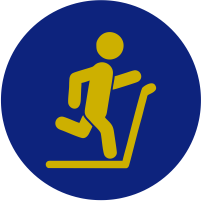Reverse Total Shoulder Arthoplasty
What Is Reverse Total Shoulder Arthroplasty?
What is a Reverse Total Shoulder Arthroplasty?
Currently, reverse total shoulder replacements are used to treat many different situations. These are patients with end stage shoulder arthritis combined with a massive unrepairable rotator cuff tear, or a complex shoulder fracture, or revision shoulder replacements which have failed.
A reverse shoulder replacement involves a special implant that places a metal ball where the socket used to be, and places a plastic socket where the ball used to be. Hence, the name “Reverse” Total Shoulder Arthroplasty. This type of replacement allows a patient to use there arm without the need of the rotator cuff muscles. The deltoid and pectorals major muscles become the main mover of the arm.
Which Patients Qualify for this Procedure?
This procedure is an alternative to living in pain. Typically, people who need this procedure have no other option as their shoulder isn’t functioning well. Patients tend to have significant arthritis, they can’t raise their arm, or can’t lift a gallon of milk out of the fridge because of a lack in strength. A reverse total shoulder arthroplasty is someone’s last option to regain function of the arm that they have been lacking for many years.
Also, a reverse total shoulder arthroplasty can be performed on patients who have a complex proximal humerus fracture that can not be treated with plates and screws called, an “open reduction, internal fixation” or “ORIF”.
When a proximal humerus fracture occurs, the fracture spreads through integral parts of the bone in which the rotator cuff attaches too. In this case, the fracture is compounded by a massive rotator cuff tear that can not be fixed.
What are My Restrictions Following Surgery?
Following a reverse shoulder replacement surgery, just like a traditional total shoulder arthroplasty, there are life long restrictions. We advise no lifting of greater than 25lbs. over head repetitively. Our goal is for the patient to regain 150+ degrees of range of motion (ROM). Typically, patients who are having this procedure lack significant functional shoulder motion. You may never have a restored ROM of 180 degrees (which is considered a full normal ROM) but our goal is to achieve ROM into a low shelf or cabinet with ease. Patients do achieve greater than a low shelf ROM on average, but this is never a guarantee.
Patients will also be restricted with ROM up the back or “Internal Rotation (IR)”. This could effect things like hooking/unhooking a brae or passing a belt with ease through belt loops. The reason for thisis that excessive IR puts the shoulder replacement in an unstable position and could dislocate. This is a rare occurrence when you stay within our guidelines, restrictions and rehabilitation plan. Ultimately, these are a few limitations to consider and in general, are minimal when the alternative is pain free living.
What Hobbies/Activities can I Do?
We encourage our patients to stay as active as possible. However, doing things that place significant stress on the shoulder greater than 25lbs. is discouraged. Things like push-ups or pull-ups or weight lifting greater than our weight restrictions could lead to a wearing-out of the replacement. Folks are most than welcome to participate in things like gentle kayaking, bike riding, walking, running, hiking, and other low impact cardiovascular activities.



